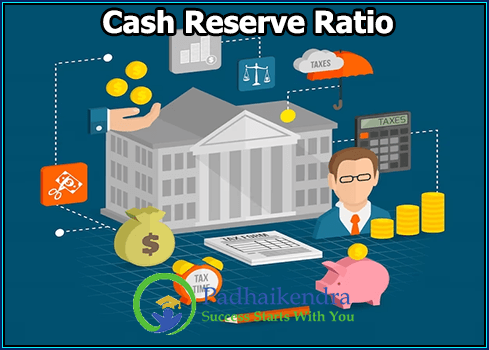Cash Reserve Ratio (CRR) is a monetary policy tool used by the central bank of a country to control the money supply in the economy. CRR refers to the percentage of deposits that commercial banks are required to hold as reserves in the form of cash with the central bank of the country. The higher the CRR, the lower the amount of money that banks can lend out, which reduces the money supply in the economy.
The central bank of a country uses CRR to regulate the liquidity in the banking system. By increasing the CRR, the central bank can reduce the amount of money that banks have available to lend, which can help to control inflation. Similarly, by decreasing the CRR, the central bank can increase the amount of money that banks have available to lend, which can stimulate economic growth.
For example, if the central bank sets the CRR at 5%, it means that for every Rs. 100 deposited by a bank’s customers, the bank is required to hold Rs. 5 with the central bank as reserves. This reduces the amount of money that the bank has available to lend out, and hence the money supply in the economy.
CRR is an important tool for central banks to control the money supply in the economy. However, it also has some disadvantages. One of the disadvantages of CRR is that it reduces the profitability of commercial banks since they cannot lend out all of their deposits. This can lead to higher interest rates and reduced lending, which can negatively impact economic growth.
Another disadvantage of CRR is that it can be difficult to implement. Banks may try to evade the CRR requirements by transferring funds to other banks or investing in other securities. This can reduce the effectiveness of CRR as a monetary policy tool.
In conclusion, Cash Reserve Ratio is a monetary policy tool used by the central bank of a country to regulate the money supply in the economy. It requires commercial banks to hold a certain percentage of their deposits as reserves in the form of cash with the central bank. By adjusting the CRR, the central bank can control inflation and stimulate economic growth. However, it also has some disadvantages, such as reduced profitability of commercial banks and difficulty in implementation.




